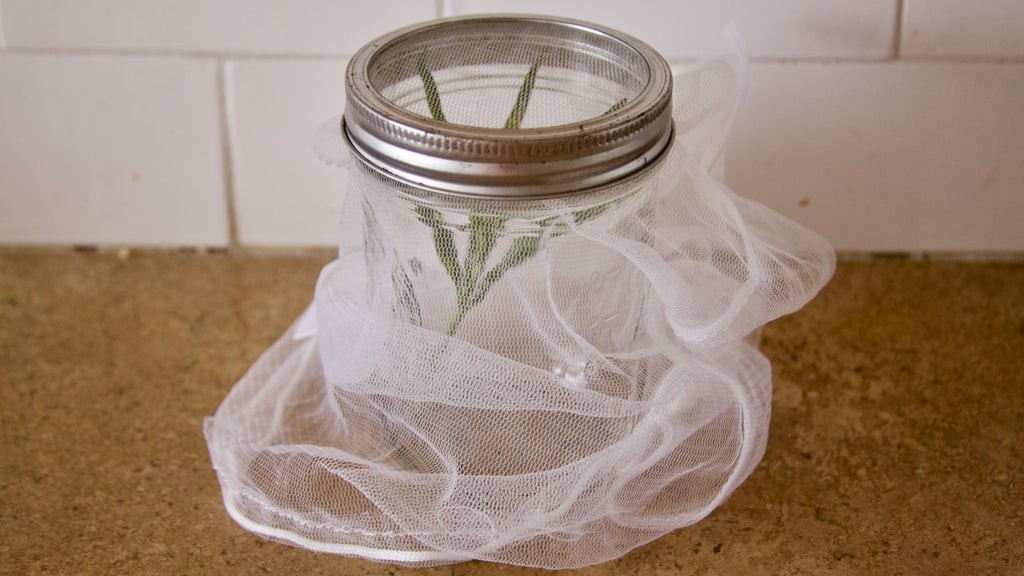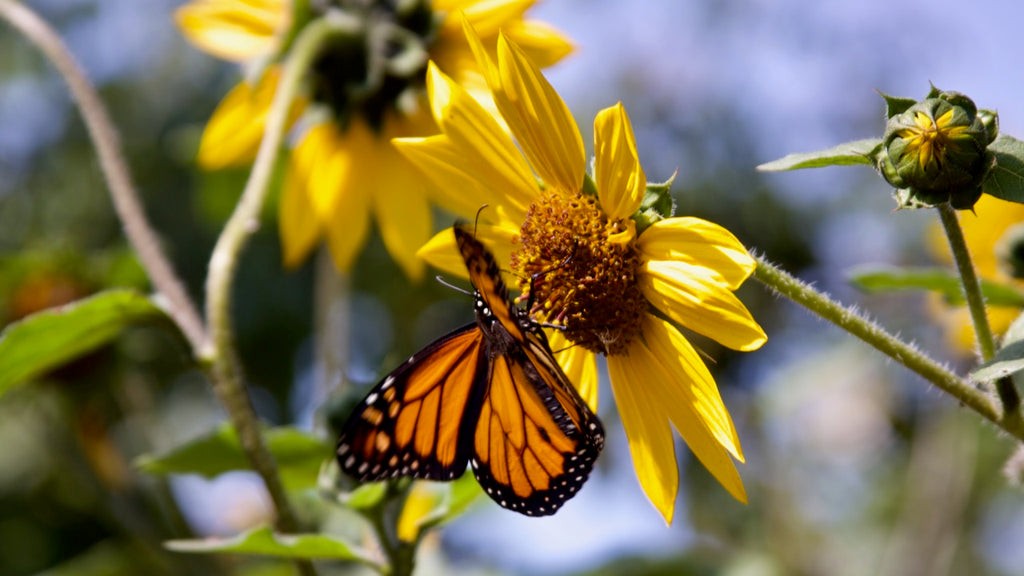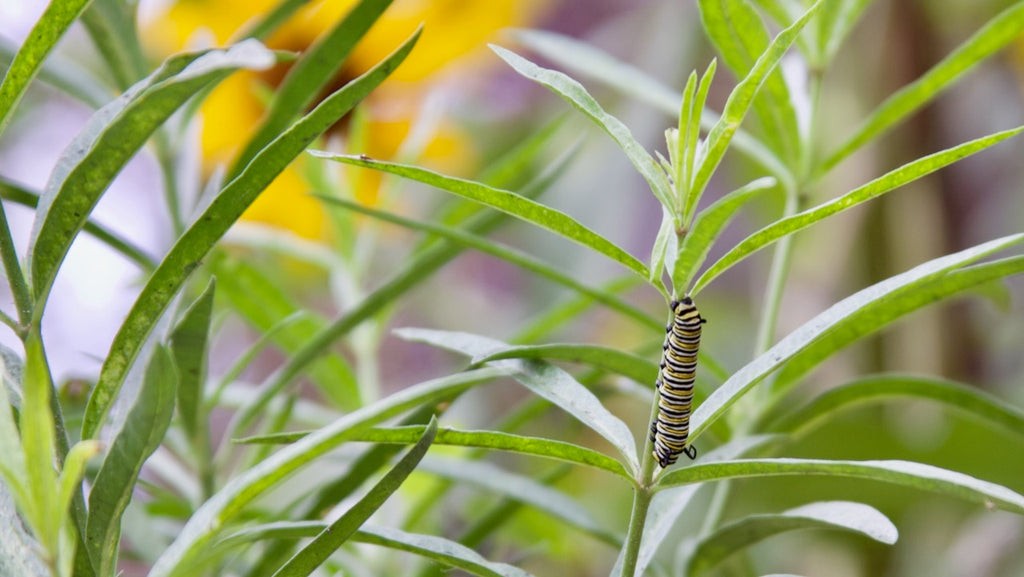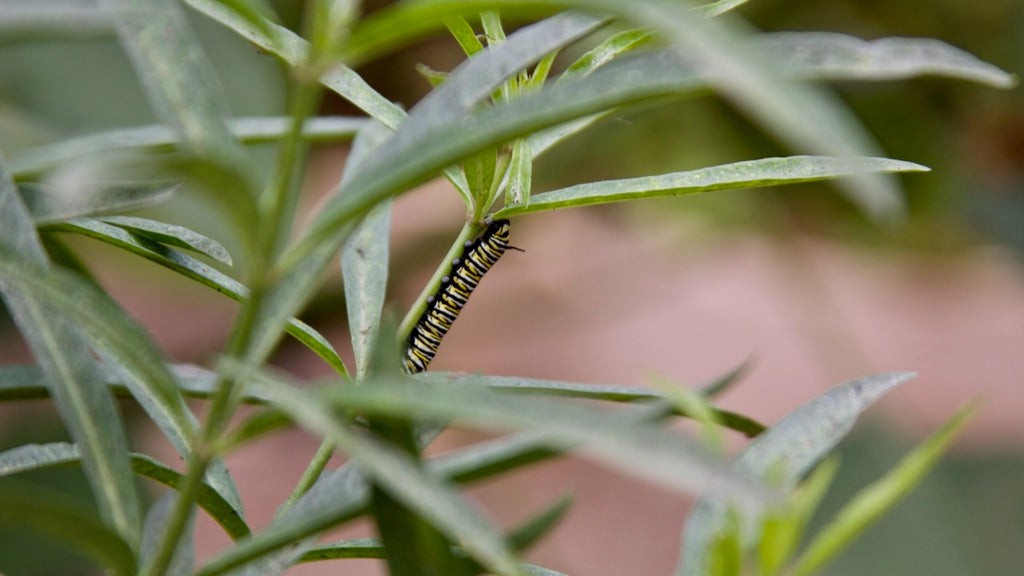Caring for a caterpillar can be an incredibly rewarding experience, offering a unique window into the wonders of nature. At CARS.EDU.VN, we believe in fostering a deeper connection with the natural world, and raising caterpillars is a fantastic way to do just that. Discover essential tips and practices for nurturing these fascinating creatures, ensuring their healthy development into beautiful butterflies or moths, plus, you can find detailed car maintenance and care guides on our website using keywords like auto care tips, vehicle upkeep advice, and car maintenance schedules.
1. Understanding Caterpillar Basics
Before embarking on your caterpillar care journey, it’s crucial to understand the basics of these intriguing creatures. Caterpillars are the larval stage of butterflies and moths (Lepidoptera). Their primary function is to eat and grow, preparing for the pupa stage where they transform into their adult form. Different species have varying dietary needs and environmental requirements, so identifying your caterpillar is the first step toward providing proper care.
- Anatomy: Caterpillars have a soft, segmented body with three pairs of true legs near the head and several pairs of prolegs along the abdomen for gripping. They also possess strong mandibles for chewing leaves.
- Diet: Most caterpillars are herbivores, feeding on leaves, flowers, and stems of specific plants. Some species are more selective than others, so knowing the host plant is vital.
- Habitat: Caterpillars thrive in environments that mimic their natural surroundings. A well-ventilated enclosure with appropriate humidity and temperature is essential for their health.
- Life Cycle: Caterpillars go through several stages of molting (shedding their skin) as they grow. After reaching full size, they pupate, forming a chrysalis (butterfly) or cocoon (moth) before emerging as adults.
2. Identifying Your Caterpillar Species
Identifying the species of your caterpillar is crucial for providing the correct food and care. Different caterpillars have different dietary needs, and feeding them the wrong plant can be detrimental to their health.
2.1 Common North American Caterpillars
Here are some common North American caterpillar species you might encounter:
| Species | Host Plant(s) | Identification | Notes |
|---|---|---|---|
| Monarch Caterpillar | Milkweed | Black, yellow, and white stripes; two black filaments on the head and two on the rear. | Monarchs are endangered; captive breeding should be approached with caution. |
| Black Swallowtail | Parsley, Dill, Fennel, Rue | Green with black bands and yellow-orange spots. Has “eye spots” that can be displayed as a defense mechanism. | Often found in vegetable gardens. |
| Cabbage White | Brassicas (Cabbage, Broccoli, Kale) | Smooth green body. | Considered a pest in gardens; can be raised indoors to prevent damage to crops. |
| Woolly Bear | Various grasses and weeds | Fuzzy, brown or black body with a reddish-brown band in the middle. The width of the band is rumored to indicate the severity of the upcoming winter. | Hardy and easy to care for. |
| Eastern Tent | Cherry, Apple, Crabapple | Dark body with a white stripe down the back and blue and yellow spots on the sides. Builds silken tents in the crotches of trees. | Can defoliate trees if left unchecked. |




2.2 Resources for Identification
If you are unsure about the species of your caterpillar, consider these resources:
- Online Guides: Websites like BugGuide.net and the Butterfly Identification website offer extensive databases of caterpillar images and information.
- Field Guides: A field guide to North American butterflies and caterpillars can be a valuable resource for identifying local species.
- Local Experts: Contact your local university extension office or a nearby nature center. They can often help you identify the caterpillar and provide care advice.
3. Creating the Ideal Caterpillar Habitat
A well-designed habitat is essential for the health and well-being of your caterpillar. The goal is to create an environment that mimics its natural surroundings as closely as possible.
3.1 Enclosure Options
- Mesh Cage: A mesh cage provides excellent ventilation and allows you to observe the caterpillar easily. It also prevents the caterpillar from escaping.
- Glass or Plastic Container: A glass or plastic container can work, but ensure it has adequate ventilation. Drill small holes in the lid or cover the top with a breathable fabric secured with a rubber band.
- Butterfly House: A butterfly house is a larger enclosure that can accommodate multiple caterpillars and host plants.
3.2 Essential Habitat Components
- Food Source: Provide fresh cuttings of the host plant daily. Place the cuttings in a small container of water to keep them fresh, but cover the water with a lid or cotton balls to prevent the caterpillar from drowning.
- Substrate: Line the bottom of the enclosure with paper towels or newspaper for easy cleaning. Avoid using soil, as it can harbor mold and bacteria.
- Climbing Structure: Provide twigs or branches for the caterpillar to climb on and pupate.
- Ventilation: Ensure the enclosure has adequate ventilation to prevent the buildup of moisture and mold.
- Temperature and Humidity: Maintain a temperature range of 65-75°F (18-24°C). Humidity levels should be moderate. Avoid placing the enclosure in direct sunlight, as this can cause overheating.
3.3 Maintaining a Clean Habitat
- Daily Cleaning: Remove frass (caterpillar droppings) and any wilted or uneaten food daily.
- Regular Disinfection: Once a week, disinfect the enclosure with a mild bleach solution (1 part bleach to 9 parts water). Rinse thoroughly and allow to dry completely before returning the caterpillar to the habitat.
4. Providing the Right Food
Caterpillars are voracious eaters, and providing the correct food is essential for their growth and development.
4.1 Host Plant Specifics
- Monarch Caterpillars: Exclusively feed on milkweed. Ensure you have a sufficient supply of fresh milkweed leaves.
- Black Swallowtail Caterpillars: Prefer parsley, dill, fennel, and rue. These herbs are easy to grow in a garden or container.
- Cabbage White Caterpillars: Feed on brassicas like cabbage, broccoli, kale, and Brussels sprouts.
4.2 Sourcing Food
- Garden: If you have a garden, you can grow host plants specifically for your caterpillars. This ensures a fresh and pesticide-free food source.
- Local Nurseries: Local nurseries often carry host plants. Be sure to inquire about pesticide use, as pesticides can be harmful to caterpillars.
- Wild Collection: If you collect host plants from the wild, be sure to identify them correctly and avoid collecting from areas that may have been treated with pesticides.
4.3 Preparing Food
- Wash the Leaves: Wash the leaves thoroughly to remove any dirt, debris, or pesticide residue.
- Keep Leaves Fresh: Place the leaves in a small container of water to keep them fresh. Cover the water to prevent the caterpillar from drowning.
- Replace Daily: Replace the leaves daily to ensure the caterpillar has a constant supply of fresh food.
5. Observing Caterpillar Behavior and Growth
Observing your caterpillar’s behavior and growth can provide valuable insights into its health and well-being.
5.1 Molting
Caterpillars molt several times as they grow. During molting, the caterpillar will stop eating and become inactive. It will then shed its old skin, revealing a new, larger skin underneath. Do not disturb the caterpillar during molting.
5.2 Signs of a Healthy Caterpillar
- Active Eating: A healthy caterpillar will eat regularly and voraciously.
- Firm Body: A healthy caterpillar will have a firm, plump body.
- Regular Droppings: A healthy caterpillar will produce regular droppings (frass).
- Normal Movement: A healthy caterpillar will move around the enclosure normally.
5.3 Signs of a Sick Caterpillar
- Inactivity: A sick caterpillar may become inactive and stop eating.
- Discolored Body: A sick caterpillar may have a discolored or shrunken body.
- Diarrhea: A sick caterpillar may have diarrhea or watery droppings.
- Lethargy: A sick caterpillar may be lethargic and unresponsive.
5.4 Addressing Health Issues
- Isolate the Caterpillar: If you suspect your caterpillar is sick, isolate it from other caterpillars to prevent the spread of disease.
- Improve Hygiene: Ensure the enclosure is clean and well-ventilated.
- Consult an Expert: If the caterpillar’s condition does not improve, consult an entomologist or a local nature center for advice.
6. Understanding the Pupation Process
Pupation is a crucial stage in the caterpillar’s life cycle, where it transforms into its adult form.
6.1 Preparing for Pupation
As the caterpillar nears the end of its larval stage, it will begin to look for a suitable place to pupate. It may climb to the top of the enclosure or attach itself to a twig or branch.
6.2 Chrysalis vs. Cocoon
- Chrysalis: A chrysalis is the pupal stage of a butterfly. It is typically smooth and hard and may be green, brown, or another color that blends in with its surroundings.
- Cocoon: A cocoon is the pupal stage of a moth. It is typically made of silk and may be wrapped in leaves or other debris.
6.3 Providing a Suitable Pupation Site
- Branches: Provide twigs or branches for the caterpillar to attach to.
- Horizontal Surface: Some caterpillars prefer to pupate on a horizontal surface. You can provide a piece of cardboard or a lid for this purpose.
6.4 Caring for the Pupa
- Do Not Disturb: Do not disturb the pupa during this stage.
- Maintain Humidity: Maintain moderate humidity levels to prevent the pupa from drying out. You can mist the enclosure lightly with water if necessary.
- Protect from Predators: Protect the pupa from predators, such as birds or rodents.
7. Emergence and Release
The emergence of the butterfly or moth from the pupa is a magical moment.
7.1 Signs of Emergence
- Chrysalis Changes Color: The chrysalis will become transparent, revealing the colors of the butterfly or moth inside.
- Splitting of the Chrysalis or Cocoon: The chrysalis or cocoon will split open, allowing the butterfly or moth to emerge.
7.2 Assisting Emergence
- Do Not Intervene: Do not attempt to assist the butterfly or moth in emerging from the pupa. Allow it to emerge naturally.
- Provide a Vertical Surface: Provide a vertical surface for the butterfly or moth to climb on as it dries its wings.
7.3 Caring for the Newly Emerged Butterfly or Moth
- Allow Wings to Dry: Allow the butterfly or moth to dry its wings completely before releasing it. This may take several hours.
- Provide Food: Provide a source of nectar for the butterfly or moth. You can offer a shallow dish of sugar water (1 part sugar to 4 parts water) or plant nectar-rich flowers in the enclosure.
7.4 Releasing the Butterfly or Moth
- Release in a Safe Location: Release the butterfly or moth in a safe location with plenty of nectar-rich flowers and host plants.
- Release in Appropriate Weather: Release the butterfly or moth in warm, sunny weather. Avoid releasing it in cold, rainy, or windy conditions.
- Release During the Day: Release the butterfly or moth during the day, as they are typically diurnal (active during the day).
8. Ethical Considerations and Conservation
Raising caterpillars can be a rewarding and educational experience, but it is important to consider the ethical implications and conservation concerns.
8.1 Monarch Conservation
Monarch butterflies are endangered, and their populations have declined significantly in recent years. Captive breeding of Monarchs should be approached with caution, as it can potentially harm wild populations.
8.2 Xerces Society Recommendations
The Xerces Society, a leading insect conservation organization, recommends against captive breeding and raising of Monarchs. They say it’s okay to raise one or two, especially as part of teaching children about Monarchs and conservation.
8.3 Responsible Practices
- Prioritize Wild Populations: Focus on supporting wild populations by planting host plants and nectar-rich flowers in your garden.
- Avoid Over-Collection: Avoid collecting too many caterpillars from the wild.
- Release Healthy Butterflies: Only release healthy butterflies or moths that are capable of flying and reproducing.
- Educate Others: Educate others about the importance of butterfly and moth conservation.
9. Troubleshooting Common Problems
Even with the best care, problems can arise when raising caterpillars. Here are some common issues and how to address them.
| Problem | Cause | Solution |
|---|---|---|
| Caterpillar Stops Eating | Illness, Improper Food, Molting | – Check for signs of illness (discoloration, lethargy). Isolate if necessary. – Ensure the caterpillar is provided with fresh, appropriate host plant. – If the caterpillar is molting, leave it undisturbed. |
| Caterpillar Escapes | Insecure Enclosure | – Ensure the enclosure is secure with no gaps or holes. – Use a lid or mesh cover to prevent escape. |
| Mold or Fungus | Poor Ventilation, High Humidity | – Improve ventilation by increasing airflow. – Reduce humidity by removing excess moisture. – Clean the enclosure regularly with a mild bleach solution. |
| Parasites | Wild-Collected Caterpillars | – Inspect caterpillars carefully before bringing them indoors. – Remove any visible parasites. – Isolate affected caterpillars to prevent spread. – Consult with an entomologist or local nature center for advice on treatment. |
| Dehydration | Lack of Moisture | – Provide fresh, moist host plant daily. – Mist the enclosure lightly with water if necessary. |
| Drowning | Open Water Sources | – Cover water containers with a lid or cotton balls to prevent caterpillars from falling in and drowning. |
10. Educational Opportunities
Raising caterpillars can be a fantastic educational opportunity for children and adults alike.
10.1 Observing the Life Cycle
Raising caterpillars provides a firsthand look at the fascinating life cycle of butterflies and moths.
10.2 Learning About Nature
It teaches children about the importance of nature, conservation, and the interconnectedness of living things.
10.3 Developing Responsibility
Caring for caterpillars teaches children responsibility, patience, and attention to detail.
10.4 STEM Education
Raising caterpillars can be incorporated into STEM (Science, Technology, Engineering, and Mathematics) education, teaching children about biology, ecology, and scientific observation.
FAQ: Caring for Caterpillars
- What do caterpillars eat?
- Caterpillars primarily eat the leaves of specific host plants. The type of plant varies depending on the caterpillar species.
- How often should I clean the caterpillar’s habitat?
- Remove frass (droppings) and old food daily. Disinfect the entire enclosure weekly.
- How can I tell if my caterpillar is sick?
- Signs include inactivity, discoloration, diarrhea, and refusal to eat.
- What should I do if my caterpillar stops eating?
- Check for illness, ensure the correct host plant is available, and leave it undisturbed if it’s molting.
- Is it safe to handle caterpillars?
- Avoid excessive handling. Wash your hands before and after handling caterpillars.
- How long does it take for a caterpillar to turn into a butterfly?
- The duration varies by species but typically ranges from a few weeks to a couple of months.
- What do I do with the butterfly after it emerges?
- Allow its wings to dry, provide nectar, and release it in a safe, appropriate location.
- Can I raise multiple caterpillars together?
- Yes, but ensure they have enough space and food to prevent overcrowding and competition.
- What is frass?
- Frass is the term for caterpillar droppings.
- Where can I find more information about raising caterpillars?
- Visit CARS.EDU.VN for in-depth guides, tips, and resources on caterpillar care and related topics.
Further Exploration on CARS.EDU.VN
At CARS.EDU.VN, we’re passionate about providing you with the knowledge and resources you need to care for your vehicles and connect with nature. Explore our site for more articles on related topics.
- Butterfly Gardening: Learn how to create a butterfly-friendly garden with host plants and nectar-rich flowers.
- Insect Conservation: Discover the importance of insect conservation and how you can help protect these vital creatures.
- Gardening with Children: Find tips and ideas for gardening with children and fostering a love of nature.
Remember, whether you’re tending to a garden or caring for your car, CARS.EDU.VN is here to guide you every step of the way.
Conclusion
Caring for a caterpillar is a remarkable journey that brings you closer to nature’s wonders. By understanding their needs, providing a suitable habitat, and offering the right food, you can witness the incredible transformation from a humble caterpillar to a magnificent butterfly or moth. Remember to prioritize ethical considerations and conservation efforts to ensure these beautiful creatures thrive for generations to come. And as you nurture these little crawlers, let CARS.EDU.VN be your trusted companion for all your automotive needs.
Do you find joy in learning and applying new knowledge? Visit CARS.EDU.VN today for in-depth guides, expert tips, and reliable services that will keep both your car and your passion for nature thriving. Whether it’s understanding the intricacies of car maintenance or the delicate balance of ecosystems, we have something to ignite your curiosity.
Contact us today to learn more.
Address: 456 Auto Drive, Anytown, CA 90210, United States
Whatsapp: +1 555-123-4567
Website: cars.edu.vn